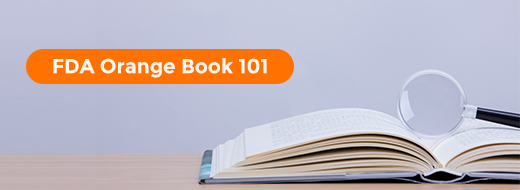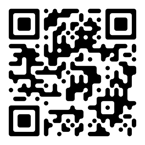Lin ZhangFebruary 04, 2021
Tag: Orange Book , FDA
There are thousands of drugs out there, each with specific benefits, potential side effects, and possible interactions, with many of the drugs being equivalent to one another or serving as alternative treatments for the same issue. The drugs that are approved by the Food and Drug Administration (FDA) are many, and it’s very important for consumers and medical professionals to know and understand each of the available medications. For this goal, there needs to be reliable information that is accessible to anyone from any area. The Orange Book strives to be such a resource.

What is the FDA Orange Book? This is an essential publication. The hard copy version of the Book is most commonly known as the “Orange Book”, the user-friendly nickname. The actual title is Approved Drug Products with Therapeutic Equivalence Evaluations. (1) The Orange Book provides medical professionals and patients with information about the existing drugs and generics that can save significant amounts of money.
In the U.S., most states encourage the substitution of drug products with generics to reduce costs, but these substitutions need to fit a specific set of criteria. In the 1970s, the FDA was overwhelmed by the requests and created a single list based on common criteria that could be used as a guide. In 1978, the intention to create a list of prescriptions that were approved for safety and their equivalents was announced. (2)
The first proposal for the Orange Book was distributed in 1979, and it was significantly smaller than it is today. In 1980, the official first edition was published. Each edition since then has been edited and improved, changing the drug list. In 1984, the Hatch-Waxman Amendments, also known as the Drug Price Competition and Patent Term Restoration Act,(3) required the FDA to create a publicly available list of approved products, while also introducing changes into the generic drug process. This led to the creation of an Orange Book that is similar to how it is today and the publication has received consistent updates ever since. (4)
There are some important often asked questions about the Orange Book, like how often it gets updates and where to receive additional information. Since February 2005, it receives daily product information for new generic drugs. First-time generic products get into the Book very quickly once they are approved. The whole Book gets monthly updates including new drug application approvals and discontinued products, and all the information for a month becomes fully updated by the second week of the following month or sooner. The Appendices for the Orange Book receive quarterly updates. An annual version is also released, as are the cumulative supplements. If there is drug information not included in the Orange Book, it can be obtained directly from the FDA, simply providing a written request to the FDA's Freedom of Information Staff. (5)
The Orange Book is available as a hardcopy or as a PDF. It is possible to get a paper version through the U.S. Government Publishing Office (http://bookstore.gpo.gov/; toll-free phone number: 866-512-1800). It gets updated on a regular basis and is available on the FDA website. (6) There is also a mobile app. (FDA launched in 2015) for people on the go. It is also possible to search the FDA database and the Orange Book for drug information and look for the patents, generic equivalents, exclusivity dates, and all the necessary information for free.
The Orange Book’s online version has five different search options. It is possible to perform a search by active ingredient, proprietary name, applicant, application number, dosage form, route of administration, or patent number.(7) It takes only moments to find out the generic equivalents, whether there are any, when these might be available, and other information useful for professionals and patients. At the time of writing, the 41st edition of the Orange Book is available. (8)
The Orange Book is available in different forms: as a document, as a printed copy, as a database, as an app, and more. There are no restrictions, so this information is free to be used by anyone, allowing patients and professionals in any area or space to check whether there are medication equivalents and obtain important information about patents, which can also be useful for drug manufacturers.
The online version of the Orange Book is easy to use. There is a database search function or a document to be downloaded in PDF. The FDA also offers guides and information concerning the use of this list. For instance, there is a webinar that addresses frequently asked questions and gives more details on the Orange Book. The webinar was released under the title: FDA Drug Topics: Orange Book: Frequently Asked Questions and Answers. Individuals can benefit from learning the abbreviations and structure the Orange Book uses. (6)
The benefits of the Orange Book are clear, which provides a single list of every approved drug, brand name and generic, that has been approved by the FDA. It’s easy to find out which medications have the same active ingredient and can serve as an equivalent to each other. This is quite important, as it can save patients and institutions money. Orange Book users mainly include prescribers, pharmacists, biological pharma industry, Agency employees, and third-party payers. Industry personnel can refer to the Orange Book for its patent section and product-specific exclusivity information, and to determine reference standards or drugs for performing their bioequivalence studies.
Furthermore, the Orange Book shows the benefits of living in the information era as well. Anyone can make a quick consultation, and professionals can use this resource regularly to improve the quality of information they have and they offer to their patients.
Overall, knowing about the Orange Book is important. This is an incredibly useful, reliable, easy to use, and consistently updated, intuitive, complete, and comprehensive resource that will serve professionals and patients interested in learning more about the medication they use and the existence of generic equivalents.
Today, the Orange Book is one of the most-searched-for terms on the FDA website (www.FDA.gov).
References
1 Electronic Orange Book (2020). https://www.fda.gov/drugs/information-health-care-professionals-drugs/transcript-electronic-orange-book).
2 FDA. (2020). Frequently Asked Questions on The Orange Book. https://www.fda.gov/drugs/drug-approvals-and-databases/frequently-asked-questions-orange-book
3 https://www.federalregister.gov/documents/2017/06/22/2017-12641/administering-the-hatch-waxman-amendments-ensuring-a-balance-between-innovation-and-access-public
4 FDA. (2020). https://www.accessdata.fda.gov/scripts/cder/ob/index.cfm
5 FDA. (2020). Orange Book Preface. https://www.fda.gov/drugs/development-approval-process-drugs/orange-book-preface
6 FDA. https://www.fda.gov/drugs/information-health-care-professionals-drugs/electronic-orange-book
7 FDA. (2021). Approved Drug Products with Therapeutic Equivalence Evaluations | Orange Book. https://www.fda.gov/drugs/drug-approvals-and-databases/approved-drug-products-therapeutic-equivalence-evaluations-orange-book
8 FDA. (2020). Approved Drug Products with Therapeutic Equivalence Evaluations. 41st ed. https://www.fda.gov/media/71474/download
About the Author
Lin Zhang, M.D., senior director of a health care industry company in the United States. With the experience in clinical medicine, biotechnology, health industry and other fields, he is responsible for the research and development of plant medicine, functional food and health products. He was a clinician and worked for the National Cancer Institute, FDA and the National Cancer Center of Japan for many years.


Contact Us
Tel: (+86) 400 610 1188
WhatsApp/Telegram/Wechat: +86 13621645194
Follow Us:




 Pharma Sources Insight June 2024: Globalization on the Go
Pharma Sources Insight June 2024: Globalization on the Go


